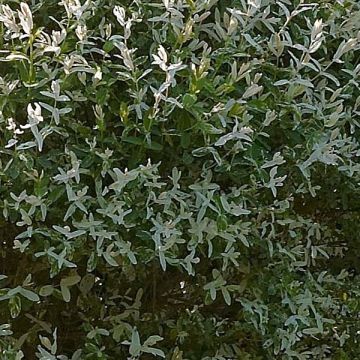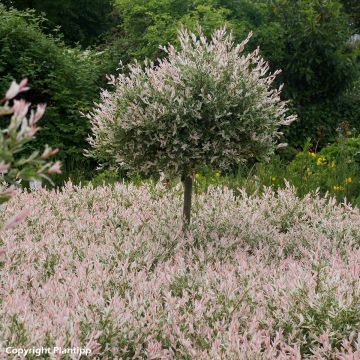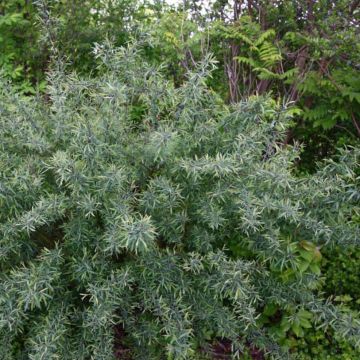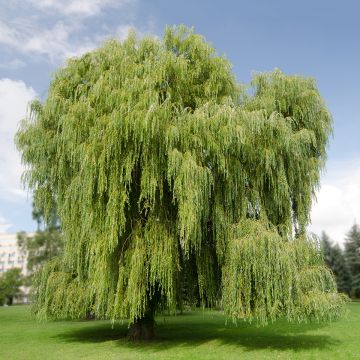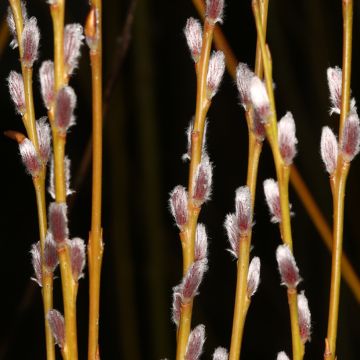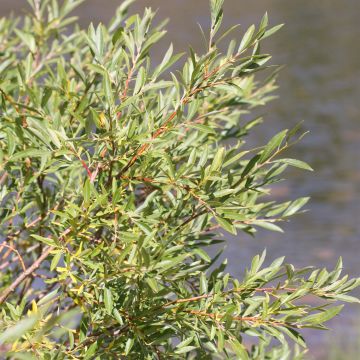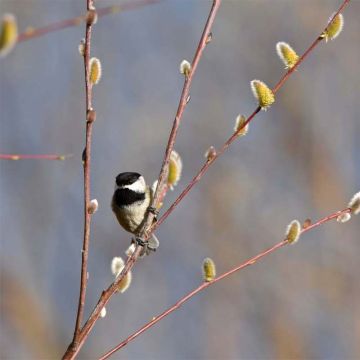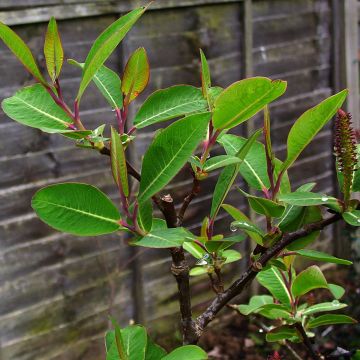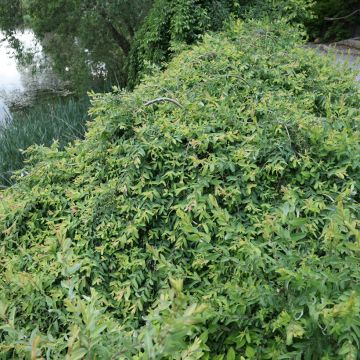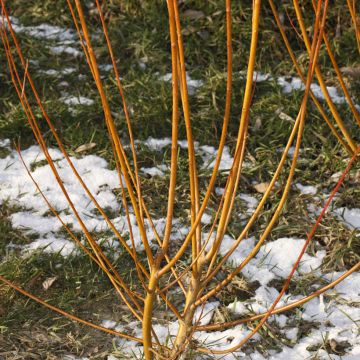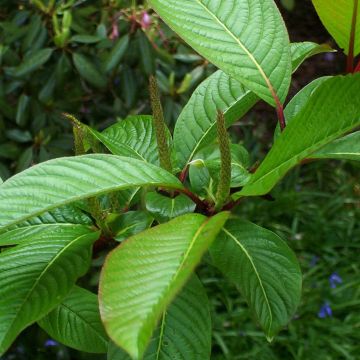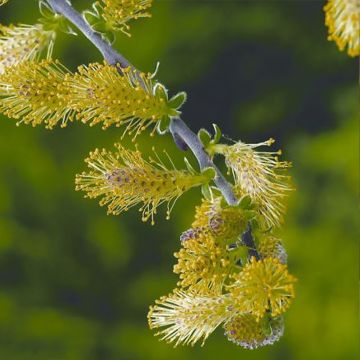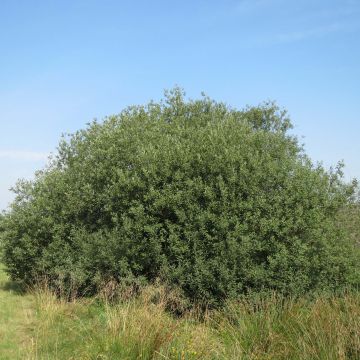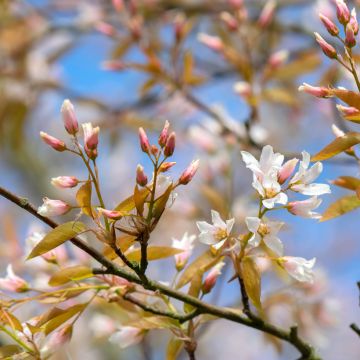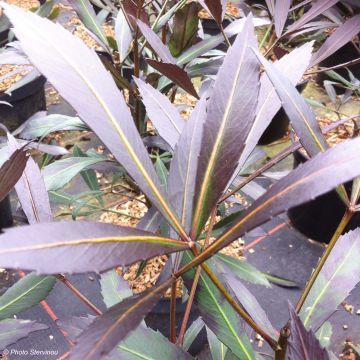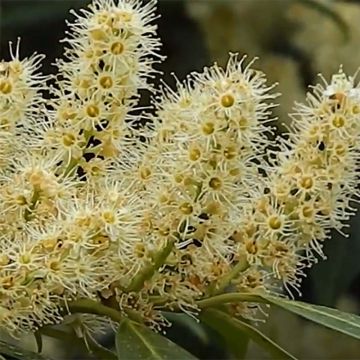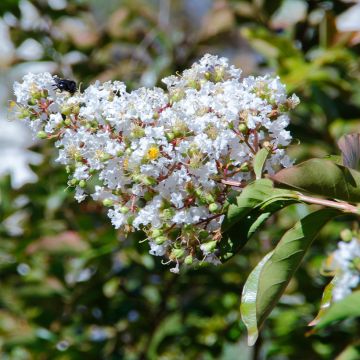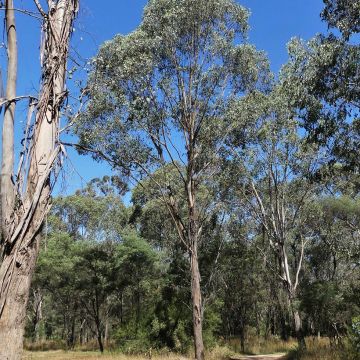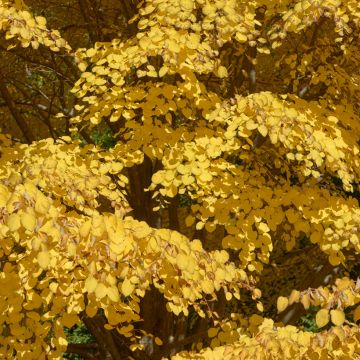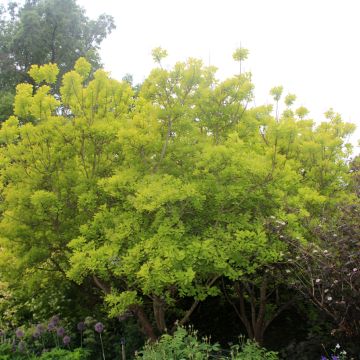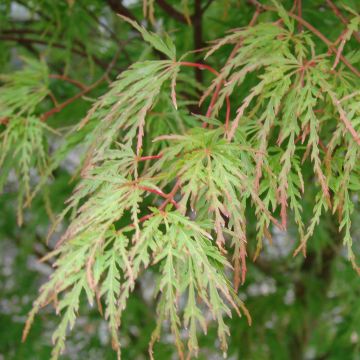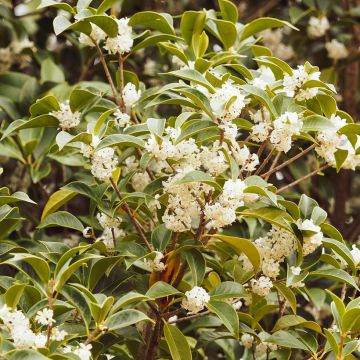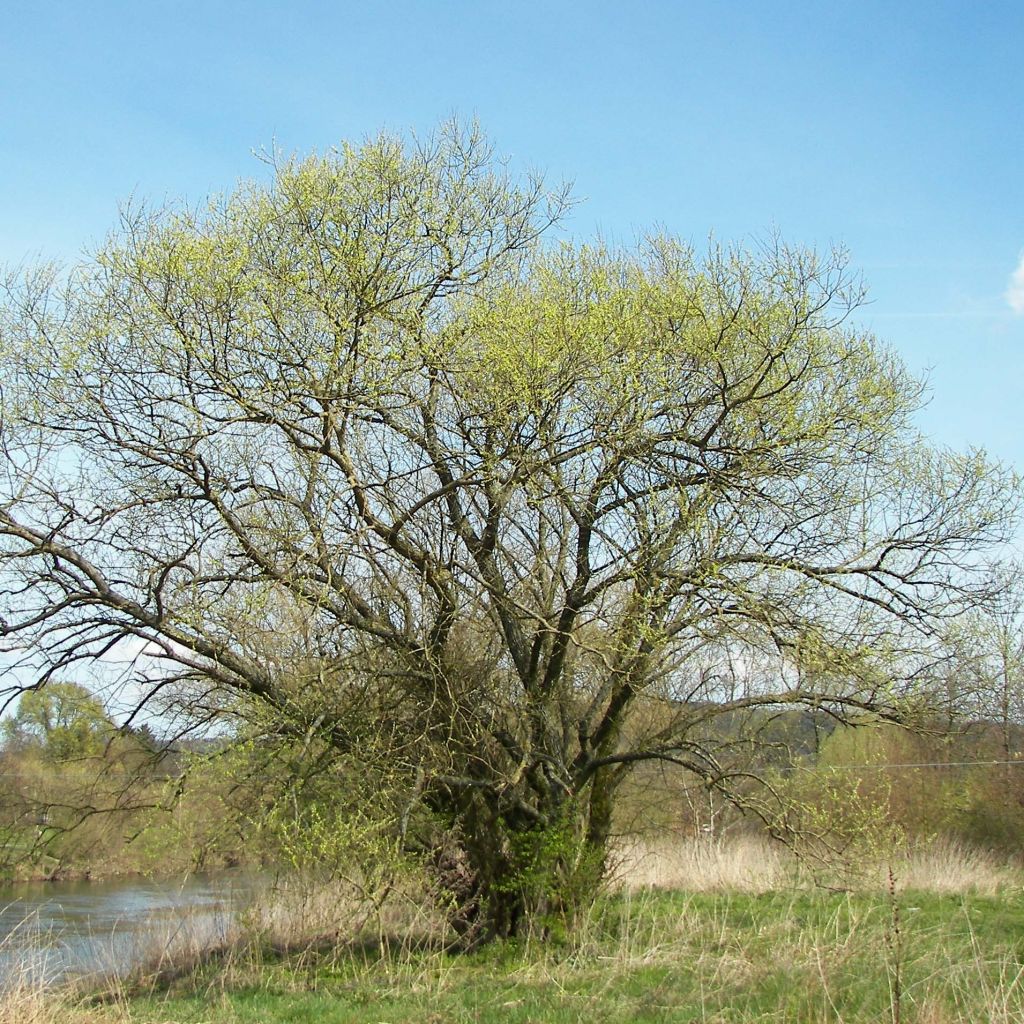

Salix alba
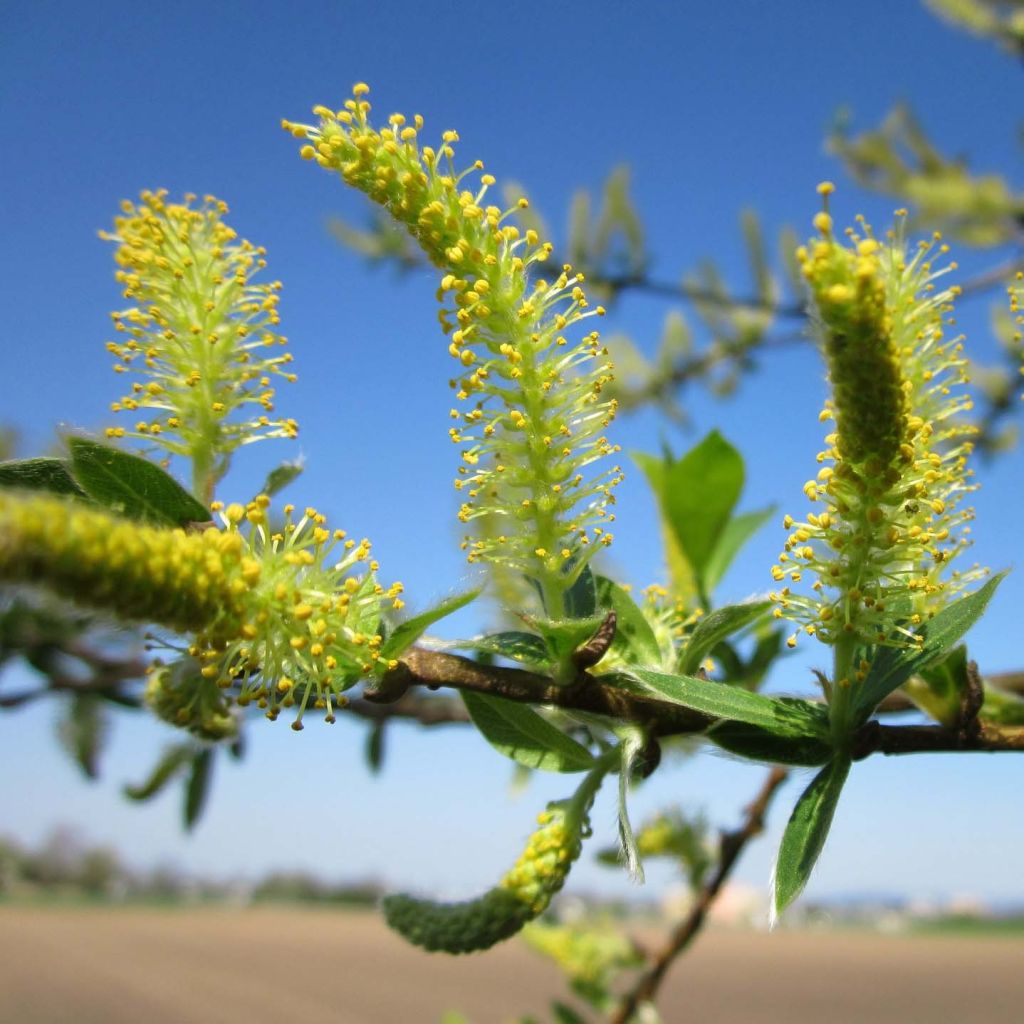

Salix alba
Salix alba
Salix alba
White Willow, European Willow
Why not try an alternative variety in stock?
View all →This plant carries a 24 months recovery warranty
More information
We guarantee the quality of our plants for a full growing cycle, and will replace at our expense any plant that fails to recover under normal climatic and planting conditions.
From €5.90 for pickup delivery and €6.90 for home delivery
Express home delivery from €8.90.
Delivery to Corse prohibited: UE law prohibits the import of this plant from mainland France to Corse as part of the fight against Xylella fastidiosa. Please accept our sincere apologies.
More information
Does this plant fit my garden?
Set up your Plantfit profile →
Description
The Salix alba, known as white or silver willow, is part of our landscapes and culture. It has always been found along watercourses and in wet places, often pruned in a pollarded style during the harvest of its long flexible branches used in basketry. When left to grow freely, this large and beautiful tree displays an elegant upright and trailing habit, and its broad rounded crown is adorned with glossy foliage that reveals a silver underside in the wind. A willow tree always adds a romantic atmosphere to the garden. This one, ideal for illuminating dark backgrounds, is best suited for a large garden to enhance the surroundings of large bodies of water.
Originally from wet areas of the Northern Hemisphere, particularly in Europe, temperate Asia, and North Africa, Salix alba is a highly adaptable tree with very rapid growth, reaching 20m (65 ft 7 in) in height and 10m (32 ft 10 in) in spread. It belongs to the family Salicaceae and the genus Salix, which includes no less than 300 species distributed in cold regions of the Northern Hemisphere. Its habit is generally rounded, with the tree developing one or several trunks topped by a wide crown. The long, flexible branches are grey-pink and pubescent when young. They bear deciduous to semi-evergreen leaves, 10 cm (3.9 in) long, narrow and lanceolate in shape. Both sides of the lamina are silky, with the upper side shiny and deep green and the lower side white-silver. Flowering occurs in April-May, at the same time as the young leaves appear. The male catkins are slender, 3 to 5 cm (1.2 to 2 in) long, arched and spreading, yellowish. The female catkins are smaller, denser, and green. The bark of this tree takes on a grey-brown colour and cracks longitudinally as it ages. Its robust taproot and spreading root system perfectly adapts to deep and unstable soils.
For this reason, it is advisable to keep this willow away from pipes. White willow is also a medicinal plant, with its bark being the first source of aspirin. Salix alba can reach the venerable age of 100 years.
White willow can be planted as a solitary tree or on the edge of a body of water in large gardens. Its silver foliage is valuable for bringing light to a darker ensemble, for example, at the boundaries of the countryside. You can find horsetails, reeds, willowherbs, daylilies, bulrushes, and Typha angustifolia, for example, among the plants that can accompany it near the water.
Tip: Collect fallen leaves in autumn and burn them if the tree shows black spots (anthracnose) or yellow-orange spots (rust) during its growth. Once all the leaves have fallen, treat them with a fungicide.
Report an error about the product description
Salix alba in pictures
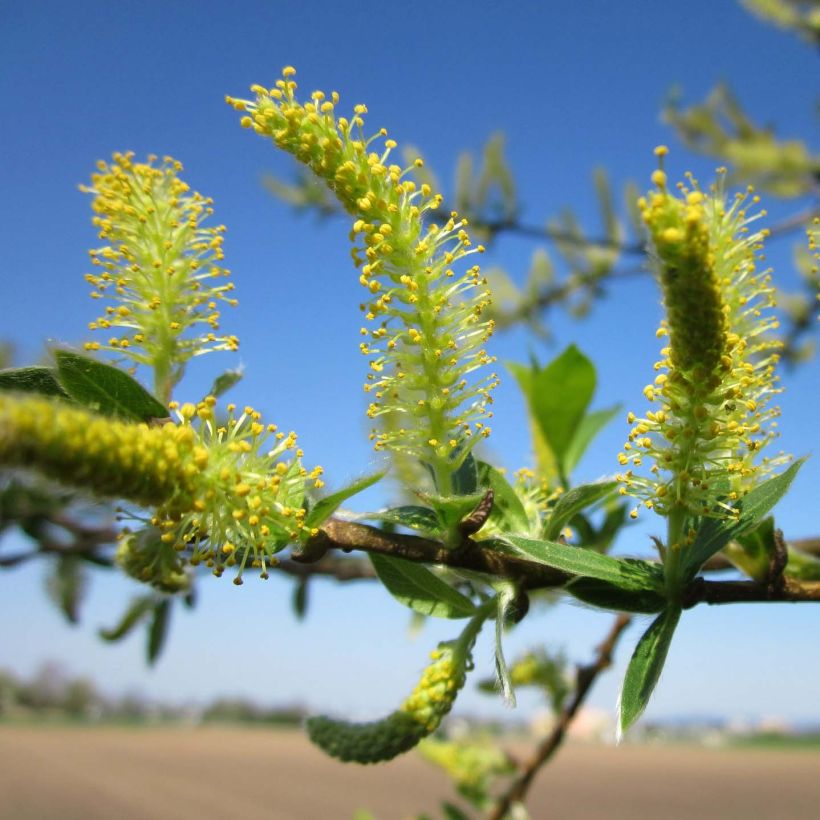

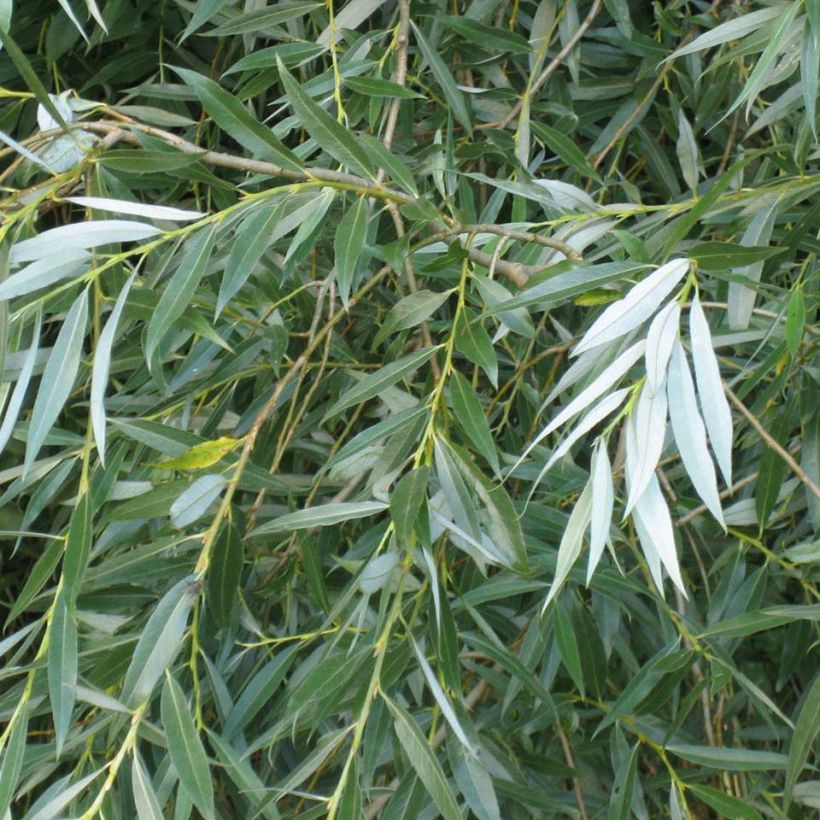

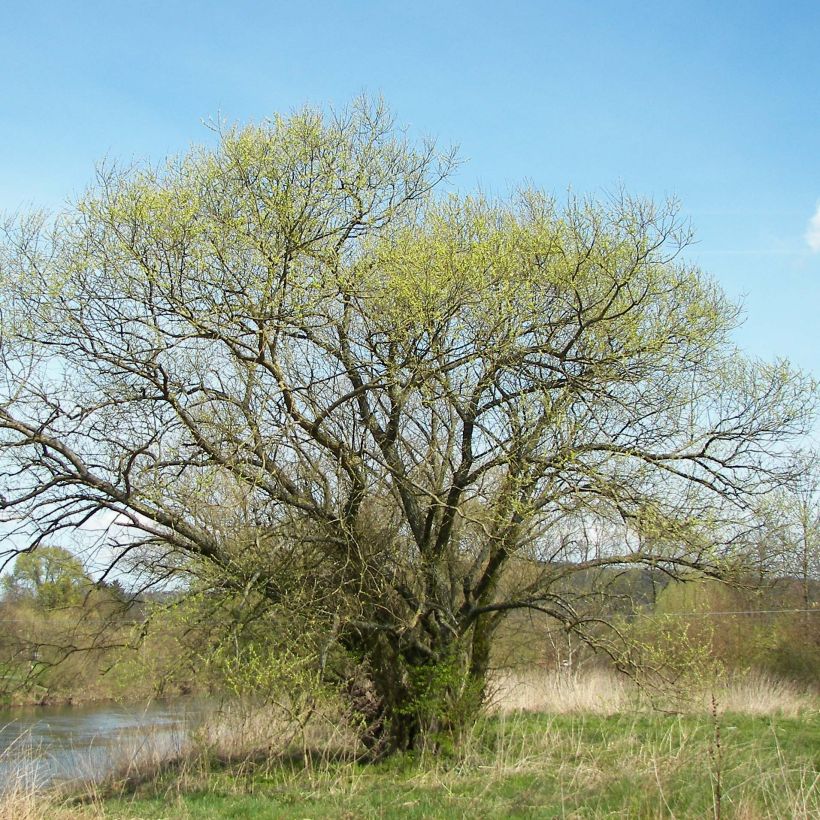

Plant habit
Flowering
Foliage
Botanical data
Salix
alba
Salicaceae
White Willow, European Willow
Central Asia
Other Willow - Salix
Planting and care
The Salix alba is preferably planted in autumn, from September to November, in any fresh, possibly damp, rather heavy, rich soil, in a sunny position. Water and mulch the young plants. To limit growth, periodically and severely prune all branches to form a pollarded tree, a stump from which many shoots grow. A short pruning of this type during winter is often the best way to contain anthracnose attacks (black spots, cracks).
Planting period
Intended location
Care
-
, onOrder confirmed
Reply from on Promesse de fleurs
Striking foliage shrubs
Haven't found what you were looking for?
Hardiness is the lowest winter temperature a plant can endure without suffering serious damage or even dying. However, hardiness is affected by location (a sheltered area, such as a patio), protection (winter cover) and soil type (hardiness is improved by well-drained soil).

Photo Sharing Terms & Conditions
In order to encourage gardeners to interact and share their experiences, Promesse de fleurs offers various media enabling content to be uploaded onto its Site - in particular via the ‘Photo sharing’ module.
The User agrees to refrain from:
- Posting any content that is illegal, prejudicial, insulting, racist, inciteful to hatred, revisionist, contrary to public decency, that infringes on privacy or on the privacy rights of third parties, in particular the publicity rights of persons and goods, intellectual property rights, or the right to privacy.
- Submitting content on behalf of a third party;
- Impersonate the identity of a third party and/or publish any personal information about a third party;
In general, the User undertakes to refrain from any unethical behaviour.
All Content (in particular text, comments, files, images, photos, videos, creative works, etc.), which may be subject to property or intellectual property rights, image or other private rights, shall remain the property of the User, subject to the limited rights granted by the terms of the licence granted by Promesse de fleurs as stated below. Users are at liberty to publish or not to publish such Content on the Site, notably via the ‘Photo Sharing’ facility, and accept that this Content shall be made public and freely accessible, notably on the Internet.
Users further acknowledge, undertake to have ,and guarantee that they hold all necessary rights and permissions to publish such material on the Site, in particular with regard to the legislation in force pertaining to any privacy, property, intellectual property, image, or contractual rights, or rights of any other nature. By publishing such Content on the Site, Users acknowledge accepting full liability as publishers of the Content within the meaning of the law, and grant Promesse de fleurs, free of charge, an inclusive, worldwide licence for the said Content for the entire duration of its publication, including all reproduction, representation, up/downloading, displaying, performing, transmission, and storage rights.
Users also grant permission for their name to be linked to the Content and accept that this link may not always be made available.
By engaging in posting material, Users consent to their Content becoming automatically accessible on the Internet, in particular on other sites and/or blogs and/or web pages of the Promesse de fleurs site, including in particular social pages and the Promesse de fleurs catalogue.
Users may secure the removal of entrusted content free of charge by issuing a simple request via our contact form.
The flowering period indicated on our website applies to countries and regions located in USDA zone 8 (France, the United Kingdom, Ireland, the Netherlands, etc.)
It will vary according to where you live:
- In zones 9 to 10 (Italy, Spain, Greece, etc.), flowering will occur about 2 to 4 weeks earlier.
- In zones 6 to 7 (Germany, Poland, Slovenia, and lower mountainous regions), flowering will be delayed by 2 to 3 weeks.
- In zone 5 (Central Europe, Scandinavia), blooming will be delayed by 3 to 5 weeks.
In temperate climates, pruning of spring-flowering shrubs (forsythia, spireas, etc.) should be done just after flowering.
Pruning of summer-flowering shrubs (Indian Lilac, Perovskia, etc.) can be done in winter or spring.
In cold regions as well as with frost-sensitive plants, avoid pruning too early when severe frosts may still occur.
The planting period indicated on our website applies to countries and regions located in USDA zone 8 (France, United Kingdom, Ireland, Netherlands).
It will vary according to where you live:
- In Mediterranean zones (Marseille, Madrid, Milan, etc.), autumn and winter are the best planting periods.
- In continental zones (Strasbourg, Munich, Vienna, etc.), delay planting by 2 to 3 weeks in spring and bring it forward by 2 to 4 weeks in autumn.
- In mountainous regions (the Alps, Pyrenees, Carpathians, etc.), it is best to plant in late spring (May-June) or late summer (August-September).
The harvesting period indicated on our website applies to countries and regions in USDA zone 8 (France, England, Ireland, the Netherlands).
In colder areas (Scandinavia, Poland, Austria...) fruit and vegetable harvests are likely to be delayed by 3-4 weeks.
In warmer areas (Italy, Spain, Greece, etc.), harvesting will probably take place earlier, depending on weather conditions.
The sowing periods indicated on our website apply to countries and regions within USDA Zone 8 (France, UK, Ireland, Netherlands).
In colder areas (Scandinavia, Poland, Austria...), delay any outdoor sowing by 3-4 weeks, or sow under glass.
In warmer climes (Italy, Spain, Greece, etc.), bring outdoor sowing forward by a few weeks.



































